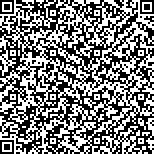| 本文已被:浏览次 下载次 |

码上扫一扫! |
|
|
|
| Decoding of drilling pressure QPSK signals based on control pulses reconstruction of rotary valve and bit error rate analysis |
|
SHEN Yue1, ZHANG Lingtan1, CAO Lu1, SHENG Limin2, LI Lin2, SU Yinao2
|
|
(1.College of Science in China University of Petroleum, Qingdao 266580,China;2.Drilling Technology Research Institute, CNPC, Beijing 100195,China)
|
| Abstract: |
| Modulation of drilling fluid pressure quadrature phase shift keying (QPSK) is capable of carrying and transmitting high density downhole measured information. Demodulation and decoding of the signal concern correct recovery of the downhole information carried in the signals. The impact of signal noise and inherent interference from demodulating system on pulses reconstruction were studied by establishing mathematical models of signals phase demodulation and reconstruction of the rotary valve control pulses. The feasibility of signals decoding is studied by amplitude recognition of the reconstructed pulses, and the bit error rate (BER) is analyzed theoretically by establishing SNR (signal to noise ratio) mathematical model of the reconstructed pulses. Results show while both the inherent interference of the demodulating system and the noise level have impacts on pulse reconstruction, the interference contributes significantly more. In reconstructing the pulses, the bit error occurs more easily due to the lower bit error threshold caused by smaller pulse level differences in the adjacent coded symbols. The BER in the theoretical computation is basically identical to that of simulation results, suggesting thatthe BER analysis model can be used for evaluating the reliability of the signals transmission. |
| Key words: rotary valve drilling fluid pressure quadrature phase shift keying (QPSK) signals reconstruction of pulse decoding signal to noise ratio bit error rate |
|
|